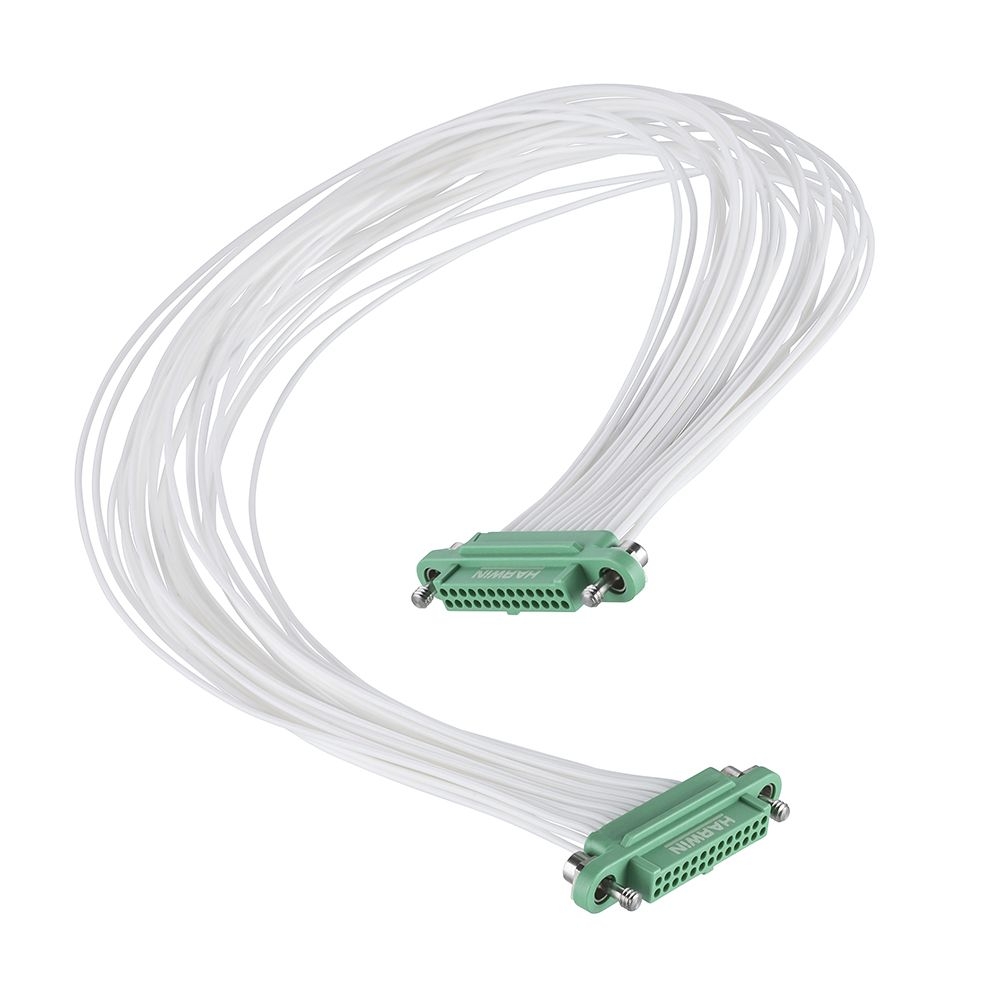Connecting with confidence

Harwin’s head of product and market development, Giorgio Potenza looks at how the company is establishing a new paradigm in aerospace cabling.
Current movement restrictions and high levels of caution around air travel are certain to have long-term implications for the global avionics industry. In the coming years, the industry will need to find ways in which to adapt. Even before the Covid-19 pandemic though, there were already underlying trends which were set to cause significant alterations to the approach to aircraft design, and the current situation is only bringing this about more quickly.

In the future, greater quantities of electronics content will be integrated into aircraft models as mechanical and pneumatic systems (which are bulky and also difficult to maintain) continue to be phased out, in favour of electrically-based systems. Large quantities of data from a host of different sensors will be continuously transferred around the fuselage, then analysed for diagnostic purposes so that any issues that require servicing or repair work can be identified and resolved. This will call for the support of more extensive cabling. Also, the higher degree of complexity involved will mean that the way in which development activities are carried out must be considerably modified. But, in spite of all this, the same safety and reliability expectations will still apply.
Size, weight and power (SWaP) have always proved to be very high priorities in all forms of aerospace design. In addition to the countless electronic subsystems, there will be many miles worth of wiring within a passenger jet’s cable harness. This takes up a lot of room, as well as adding substantially to the overall weight of the aircraft (which will in turn have a notable impact on its fuel consumption). Specifying lightweight yet rugged cable assemblies is therefore advantageous.
Given the challenging application environments involved, where there is exposure to shocks and vibration, strain relief mechanisms may also be required. The use of connectors which include backshells will help to enhance the mechanical robustness of the assembly. Backpotting assemblies, where the voids at the rear of the connector are filled with an epoxy resin, is also a very effective strain relief method and doesn’t add too greatly to the overall weight of the assembly.
In order to control impedance levels and maintain strong signal integrity characteristics (so that there is no detrimental effect on the data acquired from sensors), twisted pair arrangements are now becoming more and more commonplace. These mitigate the effects of electro-magnetic interference (EMI) and lower crosstalk. Incorporating shielding into cable assemblies is also an increasingly important consideration. Shielding should not take up much extra space or add further weight to the design. This is especially true of UAVs, where space and weight parameters are already extremely constrained.
Flexibility means mobility
In an increasing number of cases, flexible PCB assemblies are being used. Not only do these assemblies prove advantageous from a SWaP perspective (reducing the weight of the cable harnessing and the space that is taken up), they can also be beneficial in other ways. For instance, they can also cope with tighter bends than conventional wiring (which comes with significantly thicker insulation around it), and this is of clear value when there is little room to play with.

To reduce engineering costs and shorten development times, we can expect to see a change in tack within the aerospace sector. Manufacturers will still need scope to ensure their designs have a high degree of differentiation that sets them apart from their competitors but at the same time, they will want to benefit from the convenience of procuring and installing modular solutions. There will be a shift away from creating fully bespoke electronic systems towards using off-the-shelf technology instead. This will allow aircraft manufacturers to speed up their development cycles. They will also be able to address supply chain issues that are impeding progress and adding to their bill-of-materials costs. Even in situations where bespoke systems are created, engineering teams will often start off their projects with standard hardware that is easily available. This allows them to put prototypes together and then carry out initial tests to validate a new concept before moving on to the next stage of the project.
As an EN/ EN 9100/AS9100C accredited company that has played a pivotal role in avionic design for decades, Harwin serves the manufacturers of large-scale commercial aircraft right through to military UAVs. Using our unique Cable Generator online specification tool, aerospace engineers can define numerous different cabling characteristics including cable length, connector type, number of contacts, fixing mechanism, shielding, etc. Then, from this, an optimised cabling solution that exactly meets the outlined requirements can be constructed. Furthermore, as there is no minimum order quantity for the cable assembly service, manufacturers don’t have a financial outlay on cabling during the prototyping phase. This means it is much easier to experiment with different ideas and find the right cabling solution.












